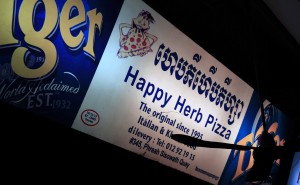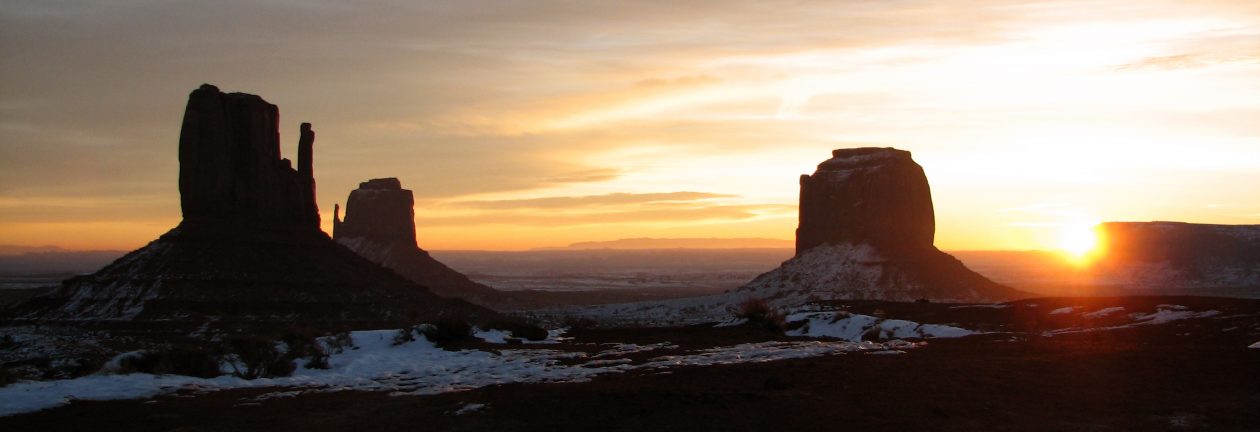Phnom Penh, Cambodia
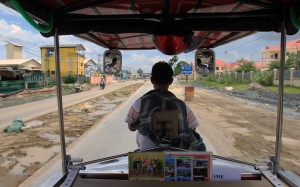
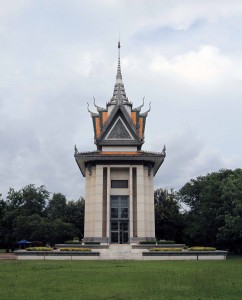
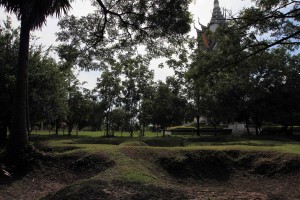
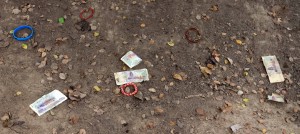
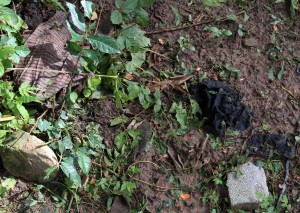
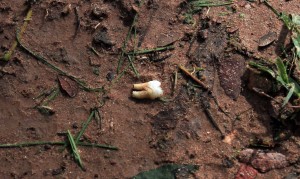
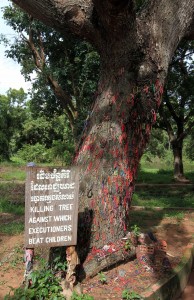
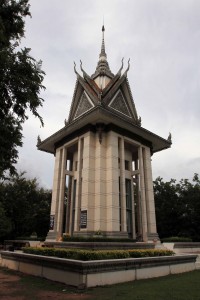
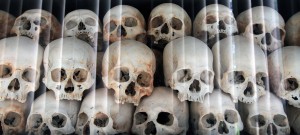
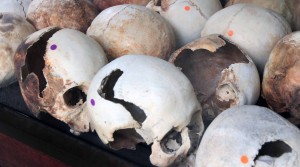
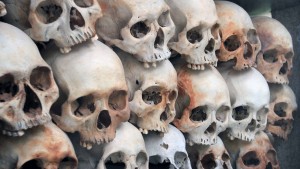
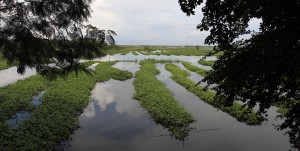
I took it easy this morning; I got ready, then went downstairs to have lunch in the hostel’s restaurant (I had a barbeque chicken wrap, french fries, and a peanut butter milk shake). After lunch, I approached one of the tuk-tuk drivers waiting outside the hostel’s entrance and paid (ten USD) for him to take me to the Choeung Ek Genocidal Center – a memorial site located at one of over three hundred “killing fields” that existed during Pol Pot’s and the Khmer Rouge’s reign of terror. The tuk-tuk drove me south, about fifteen kilometers, to the memorial; then the driver waited outside in the gravel parking lot while I entered inside; I paid the entrance fee (six USD) and received an audio guide to listen to while touring the memorial; I was also given an umbrella to protect the audio guide from the rain that had just started pouring down. After listening to the first track on the audio guide, I hurried to the museum on site to take cover from the rain; inside the museum I looked at the displays they had explaining how the Khmer Rouge rose to power, how they subjected their people to an inhumane lifestyle of hard labor in agriculture with unrealistic expectations of productivity, and how they persecuted and ultimately executed intellectuals, perceived opponents, and even just regular teachers (hard to believe since Pol Pot was a teacher!); I then watched a video that covered much of the same. Soon, the rain showers passed by and I continued my tour, following the signs and trails that led me to where truckloads of prisoners (from S-21 in Phnom Penh) would arrive and then where the prisoners would wait before being taken out to open graves and executed one by one (sometimes by horrific ways using a bamboo stalk to the head or the razor sharp spikes of a sugar palm branch to the throat). There were many depressions all around the site from where the graves were and every rainy season the ground swells up and every now and then clothes the victims were buried in and fragments of human bones and teeth surface above the soil (I noticed several rags of clothes and a human tooth on the trail as I walked around). One of the most disgusting and horrific stops along the tour is a tree that the guards used to smash children’s heads on (after the Khmer Rouge were ousted and this site was discovered, bits of skull, hair, and blood were noticed on the tree’s bark and a grave right next to it was filled with children and women). I listened to the entire audio guide as I walked or sat around, listening to the stories told by the survivors; I also listened to a very moving instrumental piece written for the victims of the Khmer Rouge by Him Sophy called ‘A Memory from Darkness’. I then walked to the last stop on the tour: the Memorial Stupa, a tall structure built for the memory of all the victims killed during the Khmer Rouge’s reign (April 17, 1975 to January 07, 1979); the Memorial Stupa is built in traditional Khmer architecture and has seventeen levels in the center which have human skeletal remains arranged by bone-type on the different levels – some skulls clearly bear evidence of the type of weapon used to murder the victim. After finishing my tour of the site, I returned the audio guide and umbrella, and then entered the tuk-tuk cab; my driver then drove me back to the hotel; on the way back to the hotel, the driver pointed out a dog roasting on a spit, so evidently they eat canine meat here.
Once at the hotel, I started working on journal entries and I met two new roommates, a man and woman from England traveling together. They asked me if I would like to join them on a walk to the night market; since I was hungry and interested in seeing more of Phnom Penh, I decided to join them. We walked past the Royal Palace to the Mekong River and then walked north to the night market, which was crammed full of locals. We squeezed our way through the crowds and found the dining area where we ordered our food; I ate a stir-fried beef and noodles dish. Once we were done with our meal, we figured we had seen all there was to the market and then walked south to try to find a pub to watch the Manchester City versus Arsenal football match. We found a restaurant that was willing to change channels for us, so we sat down and ordered glasses of draught Angkor beer; we also ordered some additional food since the cheap market food didn’t quite fill us up, so I had beef Lok Lak with rice and then I had a cappuccino smoothie and fried bananas covered in syrup and sugar . . . amidst many glasses of beer; we watched Manchester City win against Arsenal (2-2) and then watched the next game of Chelsea versus Swansea City with two other Brits who were in to football. After Chelsea beat Swansea 4-2, we then walked back to the hotel. I had some more beers and then went to sleep.
